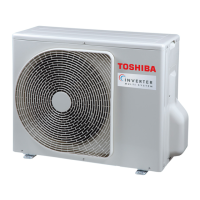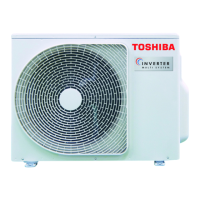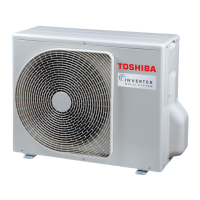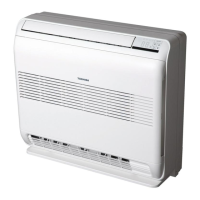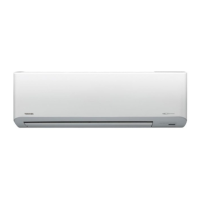What to do if Toshiba Air Conditioner compressor breakdown?
- VVincent KellerAug 5, 2025
If your Toshiba Air Conditioner's compressor breaks down, the suggested solution is to replace the compressor.
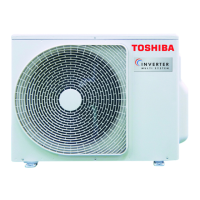
What to do if Toshiba Air Conditioner compressor breakdown?
If your Toshiba Air Conditioner's compressor breaks down, the suggested solution is to replace the compressor.
What to do if Toshiba RAS-2M18G3AVG-E fan system error?
If the Toshiba Air Conditioner's fan system has an error, you should inspect the fan system.
How to troubleshoot PMV error (SH?–8) on Toshiba RAS-2M18G3AVG-E?
If your Toshiba Air Conditioner shows a PMV error (SH?–8), inspect the PMV for issues.
How to troubleshoot PMV error (SH?20) on Toshiba Air Conditioner?
If your Toshiba Air Conditioner shows a PMV error (SH?20), inspect the PMV for issues.
What to do for current detection circuit error in Toshiba RAS-2M18G3AVG-E?
If your Toshiba Air Conditioner has a current detection circuit error, check the current detection circuit.
What to do for position detection circuit error in Toshiba Air Conditioner?
If your Toshiba Air Conditioner has a position detection circuit error, inspect position detection circuitry.
| Brand | Toshiba |
|---|---|
| Model | RAS-2M18G3AVG-E |
| Category | Air Conditioner |
| Language | English |
Explains warning marks and their meanings on the unit.
Safety for general public, including children's supervision.
Power disconnection and R32 refrigerant installation precautions.
Handling new refrigerant and oil to avoid contamination.
High-risk warnings for severe injury or death if precautions are ignored.
Risks associated with refrigerant leaks, fire, and gas mixing.
Properties of R32 and warnings for safe handling and use.
Warnings and guidelines for electrical work, wiring, and grounding.
Essential checks after installation before operating the unit.
Critical warnings related to pipe work and pump-down procedures.
Checks required before operation and during pump-down.
General precautions and user guidance for installation.
Reporting to power supplier and R32 refrigerant details.
Specific tools and component changes for R32 refrigerant.
Technical specs including operating conditions and pipe lengths.
List of installation parts and accessories that need to be procured locally.
Recommended and prohibited locations for outdoor unit installation.
Water drainage and cold climate installation measures.
Methods and considerations for securely attaching the outdoor unit.
Warning about room volume for refrigerant leak safety.
Steps for removing the valve cover and connecting refrigerant pipes.
Instructions for flaring pipes and key points for piping work.
Using torque wrench and adding indoor units.
Safety guidelines for electrical work, wiring, and grounding.
How to perform a gas leak inspection using specific detectors.
Wiring diagrams and the importance of proper grounding.
Performing test runs and checking wiring/piping integrity.
Warning about potential electric shock during checks.
Guide to understanding LED displays for fault diagnosis.
Steps for test runs and customer operation instructions.
Pump-down procedure, time limits, and electric shock warnings.
Critical pump-down steps and troubleshooting using LEDs.
Guidance and critical warnings for reusing existing refrigerant pipes.
Criteria, restrictions, and curing methods for existing pipes.

